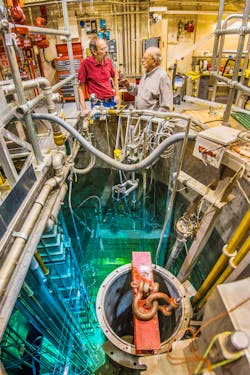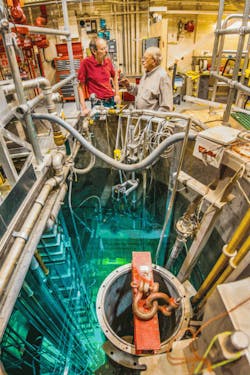Company To Build Reactor and Supply Medical Industry with Moly 99
plans on building a new type of reactor that will be able to supply enough molybdenum-99 (moly 99) to meet the medical needs of the entire world. Moly 99, with a 66-hr half-life, decays into technetium-99m, which has a 6-hr half-life. Technitium is used extensively in medical procedures because it emits gamma rays that doctors can track after it’s injected into a patient. Technitium breaks down quickly, so patients are exposed to only small amounts of radiation. Worldwide, 24 million diagnostic procedures are carried out annually using technetium. More than half of those are take place in the U.S. Globally, there’s a $4 billion market for moly 99.
Currently, moly 99 is produced at five reactors, none of which are in the U.S. The reactors are often closed for repairs, creating moly 99 shortages that last for months. And two of the reactors responsible for 60% of the moly 99 production will be stop making the diagnostic radioisotope or be decommissioned in the next decade. That means that even if a new moly-99 French reactor comes online over the next five years as scheduled, there could soon be a long-term 30% shortfall of the isotope.
Eden plans on building a reactor based on a patented concept developed at Sandia National Laboratories in the 1990s, and it has an exclusive license on the concept for the life of the patent. The reactor will be relatively small, about 1.5 ft in diameter and 1.5-ft tall sitting in a pool of cooling water about 30-ft deep. The 2-MW reactor’s all-target core of low-enriched uranium fuel elements is less than 20% U-235. The entire core is dedicated to making moly 99, and every time fission occurs, moly 99 is produced. In fact, making moly 99 is the reactor’s only purpose.
In contrast, moly 99 is now made in commercial reactors using weapons-grade U-235 and 50 to 100 MW of power. Neutrons bombard the target and when uranium fissions, it only makes moly 99 about 6% of the time.
“The companies currently supplying moly 99 are using 100 MW to drive a 1-MW process. And when you add in fuel costs, operations, and maintenance, it’s hard for them to make money,” says Ed Parma who was on the Sandia team that came up with the moly 99 reactor concept but now works at Eden. “Our design is scaled down just for producing moly. It’s more efficient and economically viable.”
Eden hopes to raise $75 million, which should be enough to let it begin production in four years. During that time, the company will need to get licensing from the Nuclear Regulatory Commission and approval for the manufacturing process from the Food and Drug Administration. The management team would like to build the reactor and plant in Hobbs, N.M., a site with a labor force familiar with nuclear work, thanks to the nearby URENCO USA facility that enriches uranium. Hobbs is also within 60 miles of Sandia Labs.

